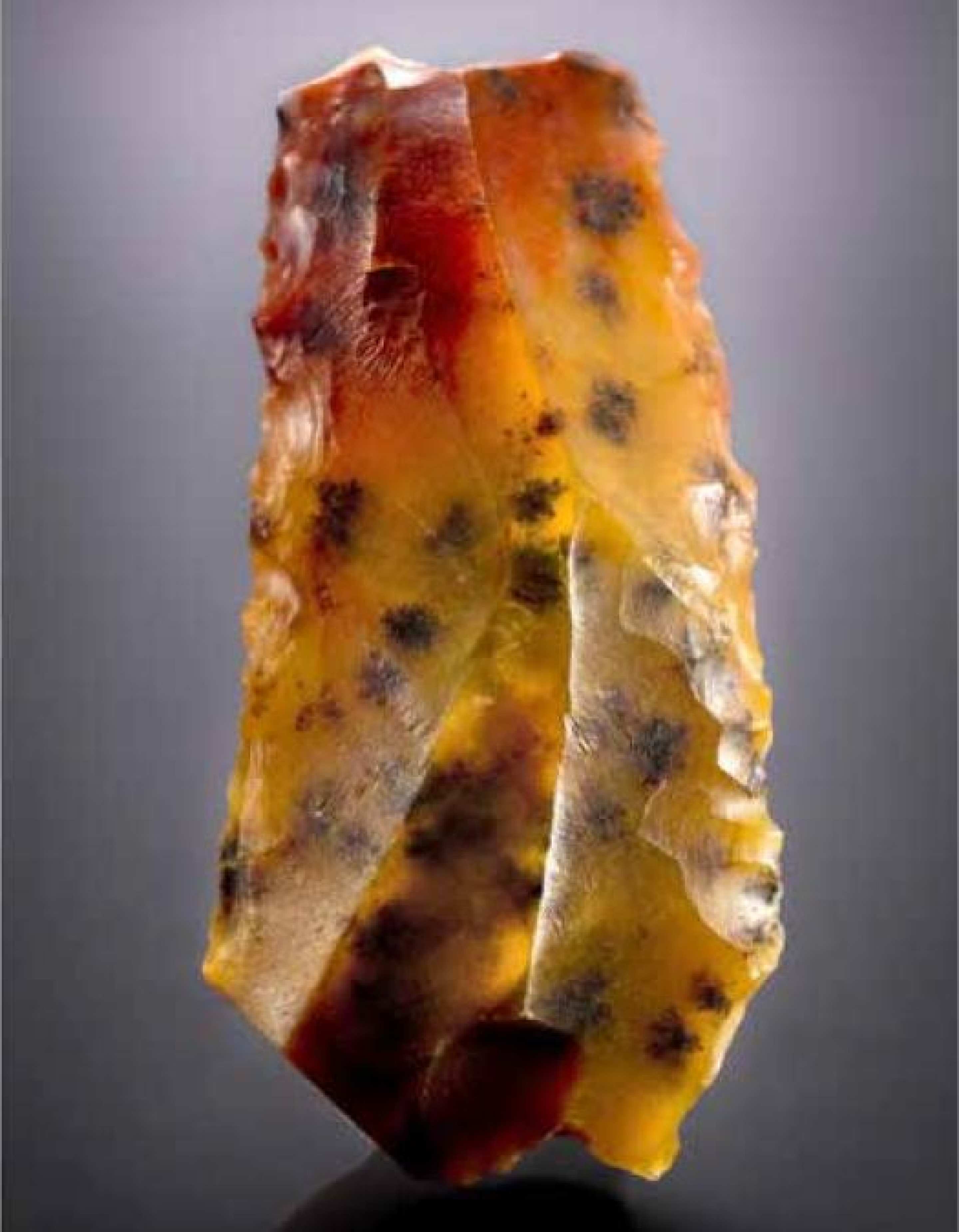
Insights from Australia's first scientists set in stone
Visitors can marvel at a dazzling display of ancient Aboriginal stone tools and learn how Indigenous scientific knowledge spanned the millennia at a University of Sydney talk this week.

An unidentified stone tool from Santa Teresa, Northern Territory. Image: Carlo Bento.
A rare collection of artefacts including axes, blades and grindstones, some dating back thousands of years, will be featured at the Sydney Science Festival talk, ‘No stone unturned: Aboriginal Scientific Knowledge’ on Friday 21 August.
Matt Poll, Assistant Curator of Indigenous Heritage at the University of Sydney’s Macleay Museum, will explain the scientific foundations of these objects and the wealth of knowledge they reveal about climate change, food technology and building materials amongst Australia’s first scientists.
“We’re trying to really challenge the idea that these tools were just about picking up a rock and bluntly banging it,” said Poll.
“There was actually a whole school of thought attached to the science of using different stone technologies, and how they were used to sustain a culture over many tens of thousands of years. It’s really a beautiful story.
Essentially, these stone tools were no different to what we use on our building sites, camping grounds, kitchens and scientific laboratories today.
Stone tools across the ages
The evolution of particular kinds of stone tools mirrored the changing climate over thousands of years. As areas of central Australia shifted from wetlands to the deserts of today, Aboriginal peoples devised new methods to thrive in their environment.
“The invention and dispersion of the tula – a small multi-purpose cutting tool – is a prime example of the innovations pioneered by Aboriginal peoples as a result of increased drought conditions,” said Poll.
Ancient climate knowledge
Even subtle indicators like the reflection of the sun on certain geographic features were used as tell-tale signs of seasonal patterns, with Indigenous Australians interpreting their environment for resource scarcity.
“Aboriginal peoples matched up their stone arrangements with the alignment of the stars, using these as a signal to move to different areas or to know whether there was an abundance of certain kinds of food or plants in the region,” said Poll.
“There’s very useful information embodied in these tools that really resonates with much of our current ecological thinking around sustainability and the use of resources in specific climates.”
Poll’s talk marks the official launch event of the Macleay Museum’s newest exhibition, Written in Stone, which opens today and runs until 1 August 2016. The exhibition celebrates the pivotal importance of stone to Aboriginal culture and identity, as a long-preserved marker of oral tradition.
“The ingenuity of this scientific knowledge, passed down through generations of Aboriginal people’s oral histories, continues to resonate in Aboriginal cultural life,” said Poll.
The inaugural Sydney Science Festival runs from 13 to 23 August, as part of National Science Week.
Event details
What: No stone unturned: Aboriginal Scientific Knowledge
When: Friday 21 August, 5.30pm to 6.30pm
Where: Old Geology Lecture Theatre, Level 1, Edgeworth David Building, University of Sydney
Cost: Free
Register: Here
Related articles
Resetting the table to halt expanding waistlines
Can farmers, producers and regulators work together at all points of the food supply chain to help curb Australia’s growing obesity problem?

Eureka Prize for Associate Professor Michael J. Biercuk
Associate Professor Biercuk was recognised with the prestigious prize for contributions at the leading edge of quantum science research.
Scientists should take a leaf out of wellness bloggers' books
How can we distinguish credible wellness information from unfounded pseudoscience? And why is it that wellness gurus are often taken more seriously than scientists? Jackie Randles writes.
18 of our most exciting scientists on Twitter
It's National Science Week this week from 15-23 August and for all you science lovers, we have created a list of the University of Sydney's most exciting scientists on Twitter.
How Einstein could help unlock the mysteries of space travel
Warp drives might be the stuff of science fiction, but they could be a step closer to reality if we look to Einstein's theory of gravity, according to a University of Sydney researcher.
Proof is in the breakfast cereal
The science of snap, crackle and pop has expanded beyond the breakfast bowl with an international research team using puffed rice cereal to explain the movement and crushing of porous materials when compressed.
University of Sydney celebrates Sydney Science Festival
From Einstein's theory of gravity to Aboriginal astronomical knowledge, University of Sydney researchers are proving there's no single formula for exploring a love of science this National Science Week.
How mobile phones could save us from obesity
A world-first intervention designed by Charles Perkins Centre researchers specifically for young people found mobile phones could improve health and halt weight gain.
Starchy carbs, not a Paleo diet, advanced the human race
Starchy carbohydrates were a major factor in the evolution of the human brain, according to a new study co-authored by researchers from the University of Sydney's Charles Perkins Centre and Faculty of Agriculture and Environment.
Big data maps world's ocean floor
Scientists from the University of Sydney's School of Geosciences have led the creation of the world's first digital map of the seafloor's geology.